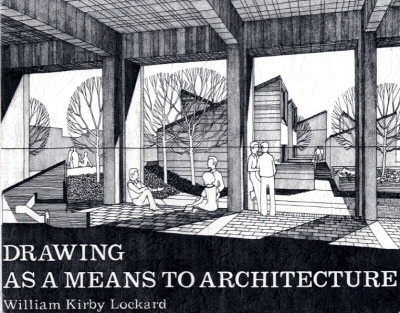Sep 10 2007
Drawing as a Means to Architecture
The book “Drawing as a Means to Architecture” by Kirby Lockard (1977) is both a student workbook and a challenge to the methods and ideas of modern architectural drawing. The author, a Professor Emeritus in architecture at University of Arizona, encourages the reader to give up reliance on traditional drafting tools and instead develop freehand drawing skills as both a way to effectively test conceptual ideas and to seamlessly integrate non-drafted elements (e.g., landscaping, vehicles, etc) into a drawing.

While the book covers the fundamentals techniques of architectural drawing the part I found most interesting was the author’s philosophy and observations on the subject. My impression is that Mr. Lockard was a bit of a free thinker at a time when architectural drawing was strictly seen as a exact and methodical science.
The author’s concepts of architectural space and the identity of the viewer help bring a drawing to a personal level. Rather than drawing from an improbable point of view that conveniently takes in the entire structure it is suggested that the student draw from a view that is humanly possible in order to bring the viewer into the space.
The section on spatial structuring taught me some new techniques for organizing the space in a perspective drawing. The chart in that section is a valuable guide for laying out a three dimensional space. The technique of creating a “measuring plane” looks very useful for accurately measuring depth into the drawing space.
Although it was my interest in perspective drawing that originally drew me to this book, I did find the sections on plan/section/elevation drawing, context and humanizing, and general drawing techniques to be very interesting. If this sounds like your thing, check it out at Amazon here.